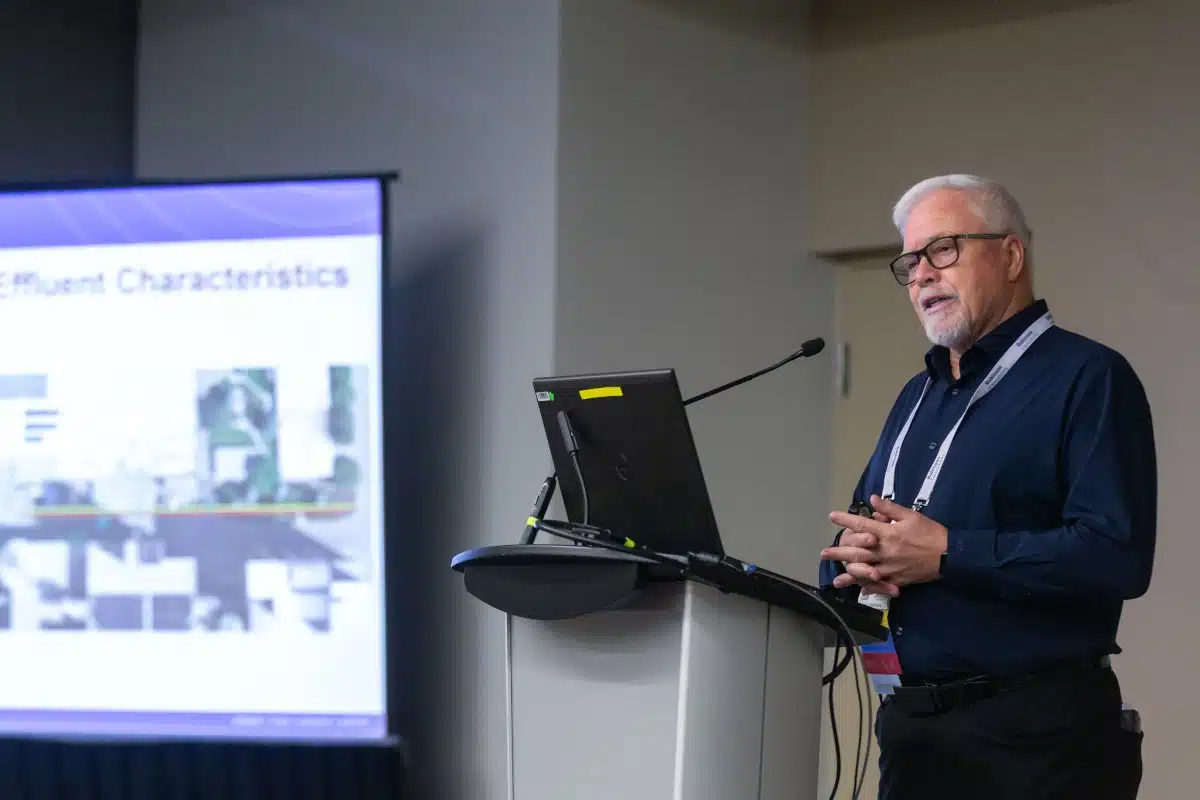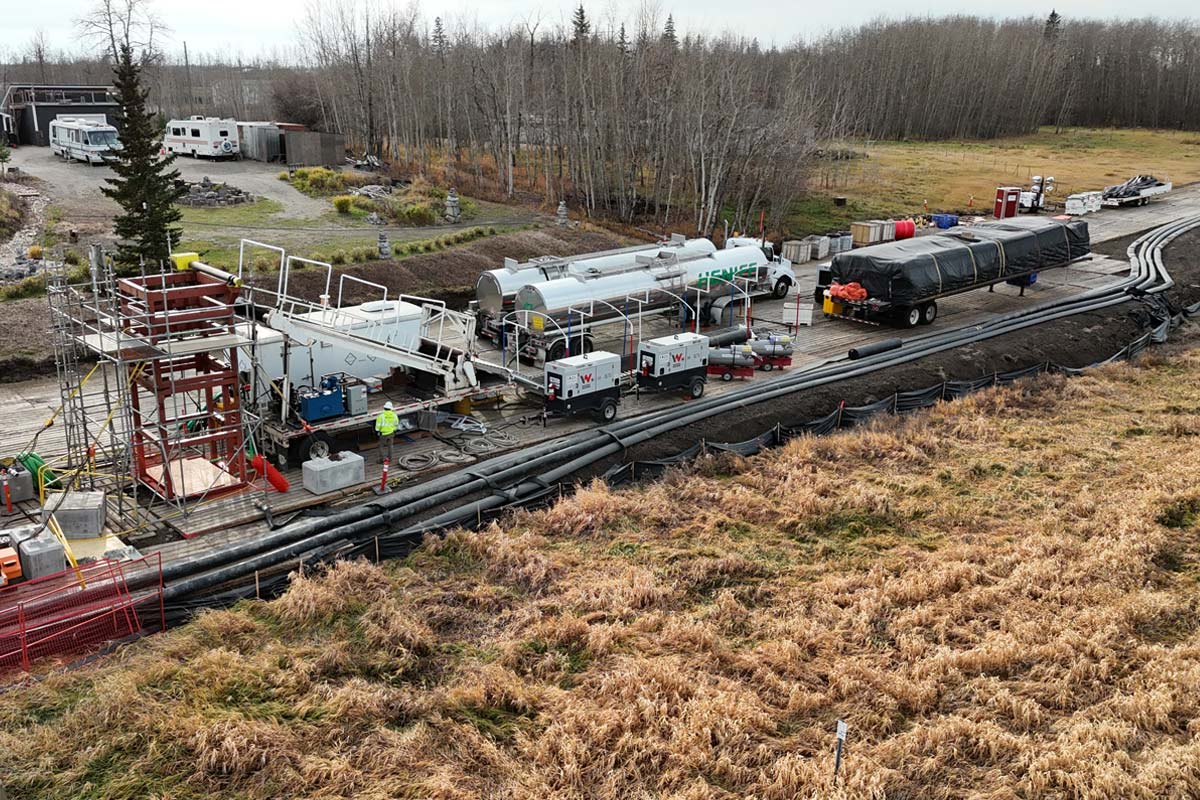Extracting HDD’s Lifeblood
April 2, 2014
 Although his name was almost appropriate enough for the trade, Rockwood Brown Sr., was not a geotechnical engineer. His primary business was not underground construction. He didn’t know about strip mining bentonite, and he didn’t really have much knowledge of the drilling industry either.
Although his name was almost appropriate enough for the trade, Rockwood Brown Sr., was not a geotechnical engineer. His primary business was not underground construction. He didn’t know about strip mining bentonite, and he didn’t really have much knowledge of the drilling industry either. What he did have was the ability to recognize a valuable business opportunity.
One such opportunity led to the birth of Wyoming Bentonite, known today as Wyo-Ben Inc., an important company in the North American drilling fluid market.
Since the days of Martin Cherrington’s first river crossing in 1971, countless trends have etched their way through the history of the horizontal directional drilling (HDD) industry. Some trends have been in the tooling, such as drill bits and reamers, while others have been on the technical end of steering technology and electronic guidance tracking.
Just the same, drilling fluid has experienced its own evolution. Even before Cherrington and other contractors active at the time of HDD’s inception began catching the eye of the utility industry, drilling fluids were used extensively in the oil and gas industry. Today, they are recognized as a vital component of the HDD process. Tracing the history of Wyo-Ben and the modifications the company has made over the years in the way its products are tailored to manufacturers’ designs and contractors’ needs, presents a comprehensive look at the progression of the overall drilling fluid market.
 The Brown Family & Wyo-Ben Products
The Brown Family & Wyo-Ben Products
Rockwood Brown Sr., in fact, was a lawyer from Vermont who, in 1911, moved to the Billings, Mont., area. In addition to his obligations as an attorney, Brown was also involved in several other business ventures, one of which led to him acquiring a sole proprietorship that included mill property near Greybull, Wyo., and a few bentonite claims nearby. Although Brown retained ownership, little was done with the property over the next few decades. By the early 1950s, he decided to hand over the ownership to his children. His sons Keith, Neal and Rockwood Jr., along with his daughter, Barbara, spearheaded the effort to transform the mill and bentonite claims into an operational, money-making business.
In 1951, a partnership consisting of the four children, along with R.E. Dansby – a former Halliburton employee familiar with the bentonite business – legally acquired the mill property at Greybull and the bentonite claims held by the sole proprietorship. The partnership was carried on under the name of Wyo-Ben Products Co.
“The business then was more on the retail level,” said Rockwood “Rocky” Brown Jr., who like his father has a background in law and is still involved in the company today as vice president and legal counsel. “We sold to independent mud and drilling companies. The major [drilling manufacturers] had their own built-in businesses but we were probably the only independent in business in the west for bentonite at the time.”
In its first year, Wyo-Ben Products processed 15,000 tons of bentonite, which was sold mainly for oil well cementing mud. Over the next several years the business grew steadily, supported by an expanding economy and a rapid increase in the growth of oil well drilling technology. By 1956, the company experienced demand for its product in excess of 50,000 tons per year. Throughout the 1960s and 1970s, several of Wyo-Ben’s mills and plant equipment were replaced numerous times to accommodate the continued growth.
“We sold at the retail level, directly to the users and had warehouses throughout Canada and the United States, and business was doing good,” said Brown Jr. “Keith is the one who really brought the company along at that time.”
By 1978, a 66-in. mill was installed at the company’s Lovell, Wyo., plant to supplement the Greybull plant output by an additional 150,000 tons per year. With the acquisition of large bentonite reserves located near Thermopolis, Wyo., and a continued increase in the demand for bentonite by the taconite pelletizing industry, a decision was made to construct a new plant that would provide additional milled production of 300,000 tons annually. Upon completion of that plant in 1980, the total milling capacity for the company reached 650,000 tons per year. That capacity ranked Wyo-Ben as one of the top producers of Wyoming bentonite, also known as sodium bentonite.
The Growing HDD Market
In January 1978, the company’s corporate name was changed to Wyo-Ben Inc. Despite challenges experienced throughout the early 1980s due to the downturn of the oil and gas industry, the company has remained competitive and is now one of only five Wyoming bentonite producers. Today, Wyo-Ben has since gained considerable presence in several other markets, namely horizontal directional drilling.Drilling fluid is commonly touted by HDD contractors as an essential component to the drilling process. In essence, drilling fluid is made up of a mixture of bentonite, water and other additives to achieve a desired level of viscosity.
Each year, rig manufacturers and drilling fluids companies spend time and money with training programs devoted specifically to drilling fluids for the HDD industry. To make any mud drilling application successful, drilling fluids must perform some basic functions: remove cuttings from the borehole; cool and lubricate the tooling; suspend the cuttings; stabilize the borehole; and control fluid loss to the formation. In order to perform these functions effectively, drilling fluid must be properly manufactured and tailored to the rig manufacturers’ designs, and specifically to accommodate drilling contractors’ conditions on the jobsite.
“The horizontal directional drilling industry has evolved quite a bit over the last 20 years and the fluids that are used now are a lot more sophisticated than they were 15 to 20 years ago,” said Stewart Krause, Wyo-Ben sales manager who has been with the company for 35 years.
“We’re using more inhibitive fluids when we’re drilling in clay; we’re using additives to control filtrates so we have a stable borehole when we’re drilling in sands and gravels. We can manipulate that fluid’s viscosity with additives to drill in most conditions and be a lot more successful. The biggest change that’s come over the years is that these holes are getting bigger and bigger and the bores are getting longer and longer.”
Krause said another big change is in the fact that drilling fluids are now specifically tailor-made to various conditions that drilling contractors might encounter on projects, such as soil conditions, for instance. “We truly believe that a formation dictates the fluid — a fluids viscosity, how much fluid you pump and certainly the makeup of the fluid itself,” he said.

Shifting with Technology, Manufacturers
Drilling fluids haven’t always been used in the HDD industry. In fact, water was initially used, but it wasn’t long before the industry learned that water was causing frac-outs to occur and causing drill heads to get stuck.“We were finding back then, that there’s got to be a better way to [drill],” said John Wornom, who recently took over the position of vice president of sales and marketing from longtime Wyo-Ben employee Bob Stichman. Wornom, who has a long history of working in the industry for The Charles Machine Works, recalled the early days of HDD. “The drilling companies reached out to a lot of people in the mud business, and the folks in the mud business saw the opportunity [to partner up solve the problem]. Together, companies like Wyo-Ben partnered with companies like Vermeer and Ditch Witch and also end-users and we kind of learned as we went.”
Even in the 1960s before some of the very early HDD contractors were active, horizontal boring was accomplished by taking oil and gas rigs and turning them sideways. According to Wornom and Krause, drilling fluids essentially began their progression in the directional drilling area once drill rigs were being designed specifically for horizontal applications. After steering technology and later electronic tracking was introduced, the drilling fluids changed as the HDD process evolved.
“The belief at that time was more horsepower was your friend,” said Krause. “As Ditch Witch and Vermeer entered the market, their rigs had very low horsepower, although they were very mobile. The drilling fluid industry was very influential on the manufacturers. For the most part, we essentially promised that we could make those little or mid-sized rigs act like big rigs if they used proper mud programs. It really allowed the manufacturing process to evolve where big rigs could go a lot farther, drill a lot bigger holes and maintain them.”
Wyo-Ben Today
Today, Wyo-Ben is headquartered in Billings, Mont., and operates three bentonite processing facilities located in the Big Horn Basin region of North Central Wyoming and South Central Montana. The company has more than 180 personnel who serve a variety of functions in Wyoming and Montana.Like any industry, maintaining market presence in the bentonite business has not been without its challenges. In 1983, the oil business experienced a dramatic decline and as a result, the industry, including Wyo-Ben, suffered tremendous losses. The company was forced to make a critical decision to either stay in business or fold like so many other companies. Even with overwhelming bank debt, the Wyo-Ben chose to struggle forward. The company redirected marketing efforts and changed the character of the company. While withstanding innumerable hardships, Wyo-Ben slowly transformed into the strong, diversified company it is today. Recognizing the need in the marketplace for better distribution, Wyo-Ben also partnered with existing wholesalers offering sole distributorships.
Continually being responsive to demand in the market place, Wyo-Ben’s products have also expanded into other industries including water and mineral exploration, oil and gas exploration, caisson drilling and tunneling, environmental sealants and industrial wastewater treatment.
“We really reinvented ourselves, slowly came out of the hole, paid off all our debts and by the early 1990s, started to make money again,” said Rocky Brown. “That period [in the early 1980s] was a perilous time, but Keith is really the one who brought us through that. He was really the pillar of the company.”
The Wyo-Ben legacy still lives on through Keith Brown’s sons, David, who is currently president and CEO and Richard, vice president of resources, and of course, Rockwood Brown Jr. For 63 years, the Brown family has owned and managed the business, which, according to David Brown, would not be where it is today without the collective efforts of employees like John Wornom, Bob Stichman, Stewart Krause and sales engineer Jeremy Hunt.
Andrew Farr is associate editor of Trenchless Technology.




